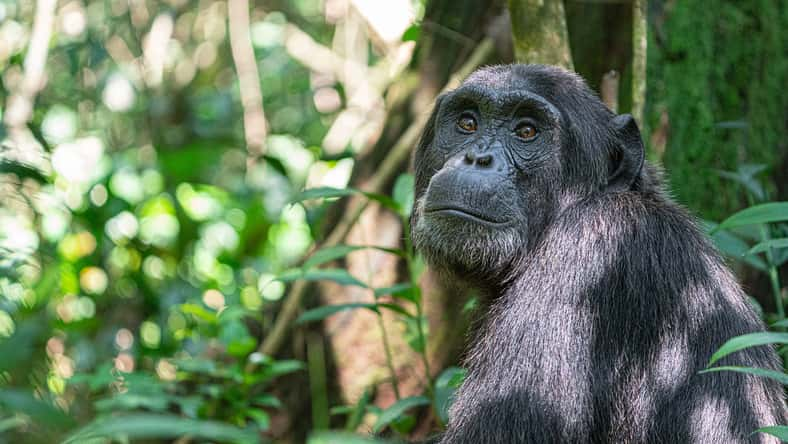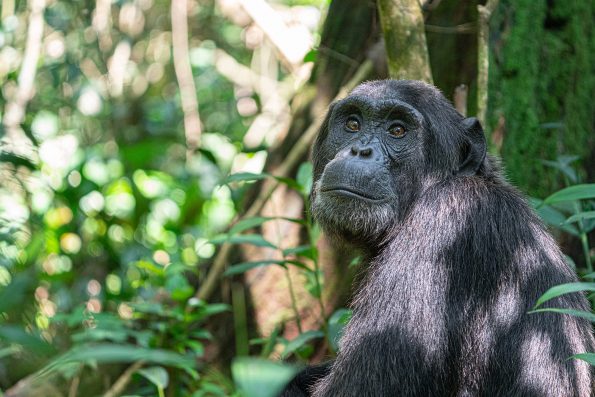Chimpanzees Were Observed Seeking Out Plants To Treat Themselves For Sickness And Injuries

The gap between humans and our closest living relatives seems to be narrowing even further after chimpanzees were observed seeking out plants to treat themselves with whenever they’re sick or injured.
A team of scientists from the University of Oxford and Neubrandenburg University of Applied Sciences recently discovered that chimpanzees living in the Budongo Forest in Uganda have been ingesting plants with antibacterial and anti-inflammatory properties.
In the new study, the researchers analyzed 17 plant samples that have been associated with odd behaviors in two groups of chimpanzees within the forest.
These behaviors entailed eating dead wood, stripping bark off of trees, and consuming certain parts of plants that didn’t seem to have much nutritional value.
The researchers closely observed the chimpanzees’ feeding behaviors and monitored their health by analyzing their urine and fecal samples.
Additionally, samples were collected from a total of 13 plant species associated with strange feeding behaviors.
Then, they were processed into extracts, and the extracts were subjected to pharmacological testing.
In the end, the researchers were able to conclude that chimpanzees used plants for medicinal benefits.
One of the plants was Khaya anthotheca, a tree species that the chimpanzees frequently sought out for its bark and resin.

EnricoPescantini – stock.adobe.com – illustrative purposes only
Chimpanzees with injuries or signs of infection, in particular, were noted to use this plant. Testing of this plant’s extracts revealed a natural resistance against several strains of bacteria, suggesting that the chimpanzees are using it as an antibiotic.
Another plant that a chimp was seen using was the fern Christella parasitica. Chimpanzees rarely consume this plant, but an injured male was spotted chowing down on it.
Later, laboratory tests showed that the fern had powerful anti-inflammatory effects, so the chimp may have been eating it to try to reduce pain and swelling.
Limitations of the study include the fact that it only focused on two chimpanzee groups. A broader investigation of chimpanzees in other locations and environments may lead to different results.
The researchers also did not examine plants that chimpanzees don’t consume, which could have determined if medicinal properties were present in them as well.
Overall, the discovery illustrates that chimpanzees appear to be able to identify the difference between plants for nutrition and plants for medicinal purposes.
It also challenges our current comprehension of animal intelligence and may have significant implications for human medicine.
It is more important than ever that chimpanzee habitats are preserved. The forest does not just provide a source of food for the animals, but it also is a place of healing and medicine.
More research is needed to confirm that chimpanzees’ plant consumption is directly linked to health outcomes. We still have a lot to learn about our primate relatives.
The study was published in the journal PLOS One.
Sign up for Chip Chick’s newsletter and get stories like this delivered to your inbox.
More About:Animals





